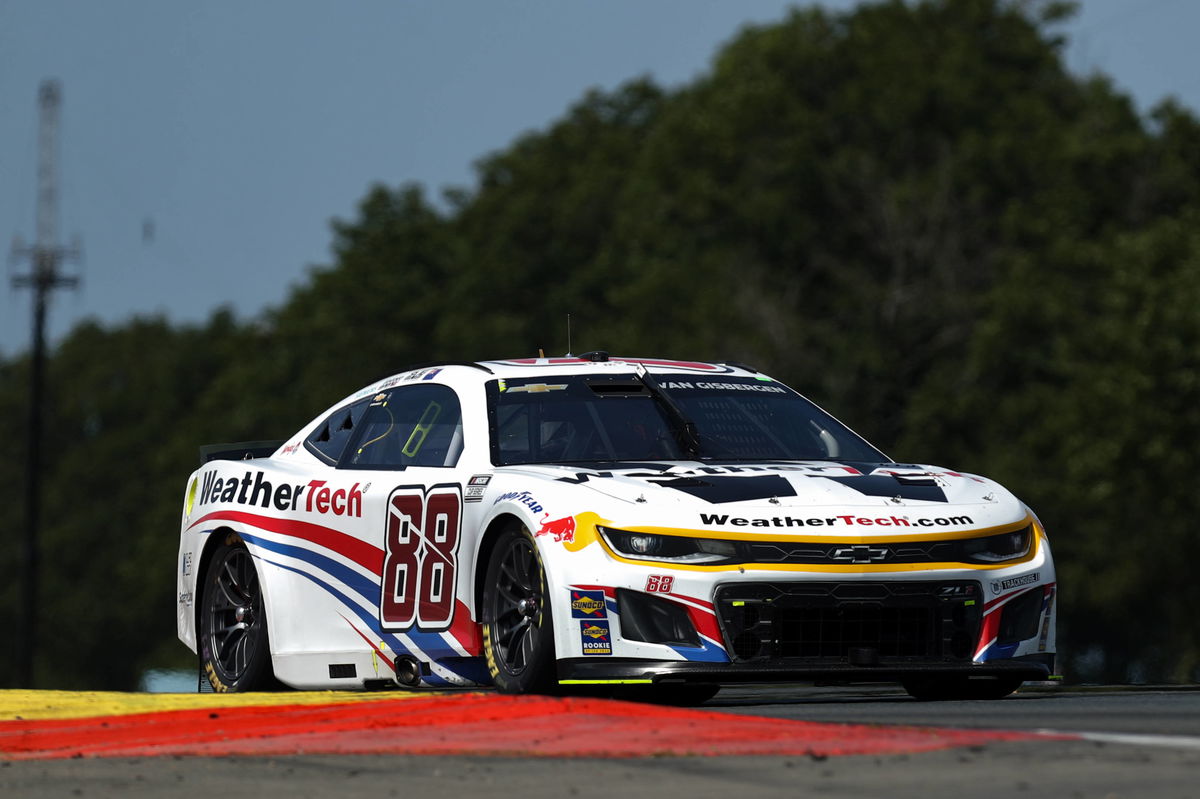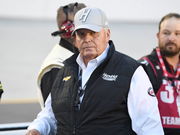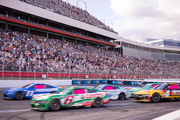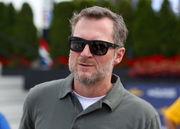
Imago
NASCAR, Motorsport, USA Go Bowling at The Glen Aug 10, 2025 Watkins Glen, New York, USA NASCAR Cup Series driver Shane Van Gisbergen 88 races during the Go Bowling at The Glen at Watkins Glen International. Watkins Glen Watkins Glen International New York USA, EDITORIAL USE ONLY PUBLICATIONxINxGERxSUIxAUTxONLY Copyright: xMatthewxO Harenx 20250810_lbm_bm2_272

Imago
NASCAR, Motorsport, USA Go Bowling at The Glen Aug 10, 2025 Watkins Glen, New York, USA NASCAR Cup Series driver Shane Van Gisbergen 88 races during the Go Bowling at The Glen at Watkins Glen International. Watkins Glen Watkins Glen International New York USA, EDITORIAL USE ONLY PUBLICATIONxINxGERxSUIxAUTxONLY Copyright: xMatthewxO Harenx 20250810_lbm_bm2_272
The arrival of the NASCAR Next-Gen car was meant to level the playing field, but on road courses, it has done the opposite. Shane van Gisbergen has emerged as the clearest example, turning the parity machine into his personal weapon. At Watkins Glen, he didn’t just win; he made the car dance in ways few others could, underlining both his skill and the widening gap in the Next Gen era that has been created between specialists and the rest of the field. And NASCAR’s senior vice president, Elton Sawyer, is brimming with joy and pride.
Watch What’s Trending Now!
However, for fans, it is a double-edged spectacle. On tracks where the Next Gen struggles to generate consistent passing, watching one driver extract every ounce of performance can be as frustrating as it is impressive, a paradox that is quickly becoming the defining storyline of NASCAR road course racing. And now with Elton Sawyer’s recent comment, the fans aren’t holding back from going against the grain.
ADVERTISEMENT
Elton Sawyer about NASCAR’s Next Gen car
The Next-Gen car made its NASCAR series debut in 2022, replacing the previous Gen-6 model used between 2013 and 2021. Designed as a clean-sheet build, it introduced innovations like symmetrical composite bodies, central lock wheels, independent rear suspension, rear diffusers, and sequential transmissions, all aimed at improving performance, lowering costs, and attracting new OEMs.
Despite its ambition, the Next-Gen car has ignited widespread dissatisfaction. Drivers and analysts have flagged issues such as excessive downforce due to wide tires and wheels, spec-part limitations reducing customization, and a capped horsepower level of 670 hp that reduces on-track mistakes like wheel spin. Safety concerns have also emerged; the car’s stiff rear has been linked to concussions for drivers like Kurt Busch and Alex Bowman in 2022, prompting chassis and bumper revisions in 2023. Meanwhile, drivers like Denny Hamlin and Joey Logano have further voiced concerns about the speed and horsepower issues this year.
Recently, when asked on SiriusXM NASCAR radio about road course performance, NASCAR SVP of competition Elton Sawyer downplayed the criticism, stating, “I think we’ve got a product that is good, but as we said last week, we’re always looking to make our product better.” This speculation mainly comes from the Watkins Glen International race.
ADVERTISEMENT
Shane van Gisbergen continues to set the standard on tracks that demand both left and right turns, often winning and doing so decisively. On Sunday at Watkins Glen International, he crossed the finish line 11.116 seconds ahead of Christopher Bell, making him the first driver in the era of electronic timing and scoring to record multiple victories in a single season with margins exceeding 10 seconds. This latest triumph also marked his fourth win this year.
Elton Sawyer, SVP of #NASCAR, was also asked on @SiriusXMNASCAR this morning about the performance of the Next Gen car on the road courses, to which he said:
“I think we’ve got a product that is good, but as we said last week, we’re always looking to make our product better.”
— Joseph Srigley (@joe_srigley) August 12, 2025
ADVERTISEMENT
Despite his dominance, Watkins Glen didn’t deliver much in the way of drama. The heavily criticized Next-Gen car has struggled to produce thrilling racing on short tracks and road courses, though it has generally fared better on intermediate tracks. “What Shane is doing right now at this level of competition—and the competition he’s racing against is phenomenal—so I think we should embrace that, celebrate that.” So yes, Sawyer makes it clear that he likes the current road course product. But at the same time, he said NASCAR is always working to “make the product better.”
He goes on to say, “When we look at our product on the racetrack, we want to continue to look at that and what we can do whether it’s the car, the engine, the tires, whatever it may be, to continue week in and week out to bring the best racing possible to our race fans. … Our goal is always to continue to make the product better. I can’t emphasize that enough. We’re not just sitting still on what we have.”
Moreover, Sawyer has acknowledged growing fan concerns about horsepower and confirmed that boosting the power in the Next-Gen car is on the table, though any chances likely wouldn’t materialize until the 2026 season. Moreover, fans sound off on Kyle Busch’s comments on the Next-Gen car, too. Elton emphasizes discussions of progressing well with technology partners and engine builders, particularly for short track packages. But the fans aren’t having it.
ADVERTISEMENT
Top Stories
Rick Hendrick Strikes Fear in NASCAR Fans With Chevy’s New “Illegal” Car

New Charter Deal Triggers ‘Financial Frenzy’ as NASCAR Teams Set for Massive Payday

Martin Truex Jr’s Former Crew Chief Ends 12-Year Fight In Huge Personal Announcement

Denny Hamlin Gloats as Jim France Forced to Eat His Words Against Rick Hendrick & Co.

Dale Jr. Reveals How Permanent Charters Could Turn NASCAR Into a Billionaire’s Club With a Brutal Reality Check

Fans sound off alarms on NASCAR’s Elton Sawyer’s comments
What began as a guarded defense by NASCAR’s Elton Sawyer quickly turned into a public relations crisis, capturing the frustration boiling over among the fan base. While Sawyer told SiriusXM NASCAR Radio that they have got a good product, many fans interpreted it as dismissive rather than constructive. The response was searing, not just disagreement but deep disillusionment. “I’m convinced he is intentionally trying to kill NASCAR,” said one scathing social media post, echoing the desperation of longtime followers seeing the sport drift from its roots.
Others pointed more directly at the leadership, asserting that Sawyer’s reassurance masked inertia, saying, “Nothing will change at all with him and others in charge.” That sentiment reflects a growing belief that the status quo has been classified and that NASCAR officials are merely paying lip service to reform. In rallying around the notion that “More BS from the monopoly,” supporters are expressing how disconnected they feel from a governing body that seems out of touch with their expectations.
ADVERTISEMENT
Meanwhile, frustration morphed into disbelief for many. “What race is he watching? It’s clearly not NASCAR,” commented one fan, who saw no similarity between Sawyer’s optimistic view and the action, or lack thereof, witnessed on the track. The backlash took a harsher edge with another user bluntly calling Elton Sawyer blind, stating a simple, “ He is blind.” Such comments underscore that the fans aren’t just angry; some feel ignored, lamenting that NASCAR’s leadership is unable or unwilling to see the failure their eyes show them.
The most ominous reflection came when a fan unabashedly concluded, “If he ACTUALLY thinks it is good, then all is lost.” That sentiment speaks to a pivotal crisis; it is not just satisfaction with the Next-Gen car, it is a crisis of confidence. NASCAR leaders who continue to defend the product while dismissing or downplaying the shortcomings risk alienating the very community that keeps the sport alive. The warning isn’t subtle. Talk is no longer enough; only tangible change can restore trust.
ADVERTISEMENT
ADVERTISEMENT
ADVERTISEMENT

